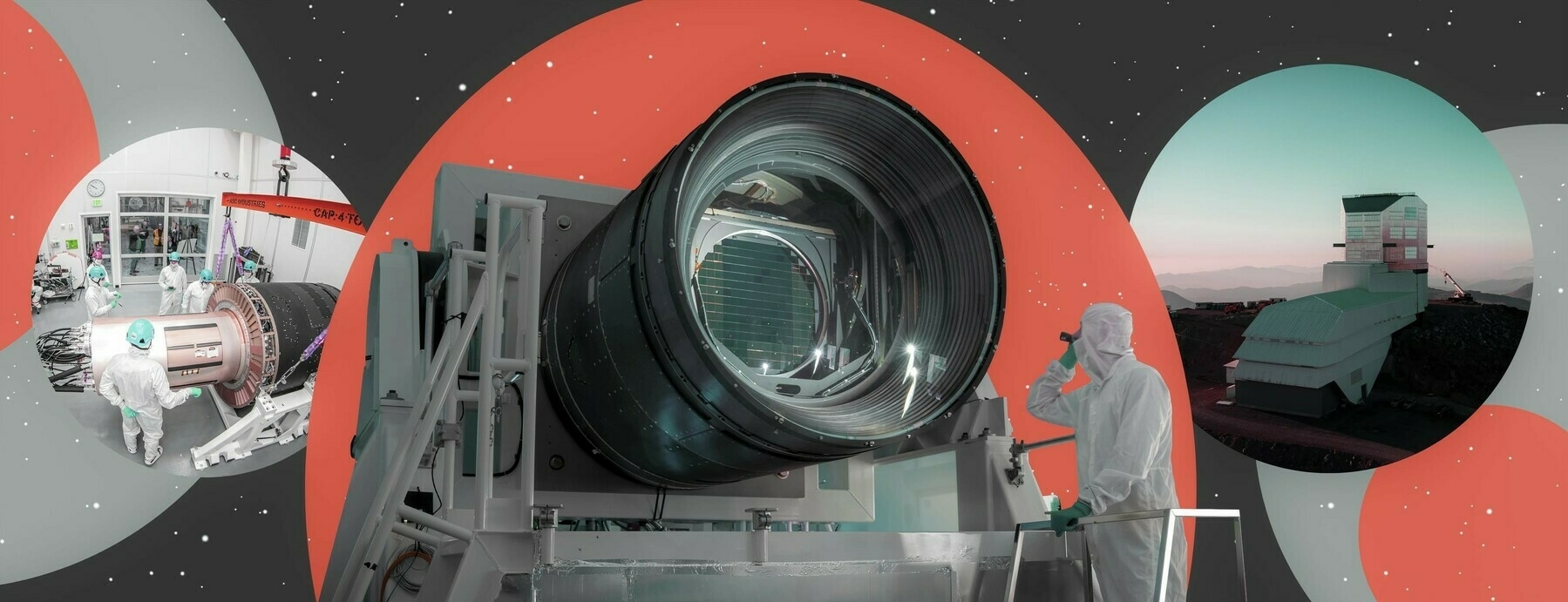I’m now blogging at micro.blog which cross posts to my accounts on mattkenworthy@mastodon and mattkenworthy@bluesky - so far, so good, but I don’t know how it works breaking up longer posts, so to test this, I’ll tell an #astroinstrumentation story.
Many many years ago, as a young postdoc, I went to a talk given by Roger Angel, a professor at the University of Arizona. Among many discoveries and innovations, he’s perhaps most famous for pioneering ‘spin casting’ of giant primary telescope mirrors, built underneath the football stadium on the U of A campus.
In a packed lecture hall he talked about the need for a wide field, eight metre optical telescope to do cosmological and time domain astronomy, something called the “Dark Matter Telescope”. His talk laid out the science requirements, and the associated optical components and first order estimates of what you would need. The telescope would have to be an all reflective, three mirror design - a challenge in itself, but Roger cut to the chase and said the real issue would be the camera required.
For starters, all astronomy cameras have to be cryogenically cooled to minimize noise from thermal sources, and to prevent condensation on any electronics, you typically have to build a container that can have the air removed, leaving a vacuum that both prevents damage to the detectors and thermal heating by convection. He quickly pointed out that the dewar would be huge - something shaped like a soda can but the size of a large desk, containing millions of dollars of detectors, complete with filter exchange mechanisms that work in cryogenic conditions.
He then dropped the bombshell - you’d need a giant glass window across the front of the dewar, at least one metre in diameter.
I was at the back of the audience, and at this point there was a ripple of amusement and disbelief - this was an incredible, almost impossible design to achieve, challenging engineering limits.
Roger was unperturbed by this, and continued his argument. This wasn’t impossible, he said, this was necessary. It might not be possible today, but we have to address this challenge in order to enable science in the next twenty years. He carried on for another five minutes, and by the end of the presentation, people were nodding in agreement and the round of applause was huge.
I’ve never in my professional life seen someone sway an audience from huge skepticism to agreement in a single talk. It was a masterclass in storytelling, something which I’ve since tried to emulate when talking about my science ideas.
So, how did it all work out?
The camera and dewar were completed last month ready for installation on the telescope Roger proposed, now called the Vera C. Rubin Telescope and it should see first light early 2025.
